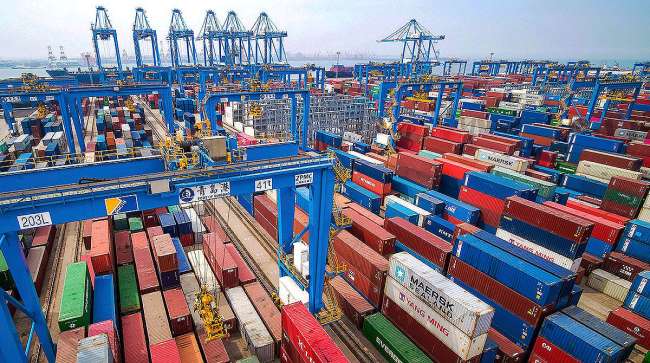Senior Reporter
DHL Index on Strength of International Economy Shows Only Slight Dip

[Stay on top of transportation news: Get TTNews in your inbox.]
Despite persistent concerns of a worldwide economic slowdown, a new report from logistics and shipping company DHL says international trade remains strong, with only a slight decline in its overall DHL Global Connectedness Index.
In 2018, the index fell 3 percentage points to 121% as the trade dispute between the world’s biggest economies, the U.S. and China, escalated and there was a drop in the amount of business capital between nations.
The world is less globalized than you might think. Learn more in the update to the Global Connectedness Index. https://t.co/EygrlLBy4c #DHLGCI pic.twitter.com/i4hHh0kggb
— DPDHL News (@DeutschePostDHL) December 5, 2019
The index reached its all-time high of 124% in 2017.
The Bonn, Germany-based company began the index in 2001 and uses that year as a starting point, and the figure of 100%.
The updated number was released during a year-end news conference with the company’s leaders Dec. 4.
“Global trade is too big to fail, and I think that continues to be the underlying theme,” DHL Express CEO John Pearson said. “Trade is at the center of everything we do. Literally, we have grown up with trade and globalization. Ultimately, what we’re seeing today is the evolution of globalization, not its decline. Decision-makers need to be careful to not overreact to strong rhetoric or headlines.”
The report also says, “Despite major downgrades to trade forecasts over the past year, trade’s contribution to the world’s overall level of connectedness is on track for only a modest decline.”
DHL uses four items to measure its index: capital, trade, information and people. Three of the four — trade, information and people — showed modest increases.
From 2017 to 2018, trade went up from 112% to 114%. Information climbed from 173% to 176%, and people jumped from 118% to 121%.
But the flow of capital among nations took the biggest dip, dropping to 105% in 2018 from 116% in 2017, causing the overall index to decline 3 percentage points.
However, DHL said capital flow across borders is beginning to improve in part because the 2018 U.S. tax reform measure has resulted in multinational corporations bringing hundreds of billions of dollars in earnings back to the U.S. from overseas.
Looking at 2019, the report paints a cautious picture, showing international trade continues to grow, albeit at a slower pace than in 2017 and 2018, which company officials said shows the strength of the international economy and globalization.
“World trade was quite resilient in the early stages of the U.S.-China trade war, however that strength has not extended into 2019. Trade intensity declined in the first half of 2019, and current forecasts call for full-year declines in 2019 and 2020,” said one of the authors of the report, Steven Altman of New York University Stern School of Business. “Trade growth is not expected to keep up with GDP growth. We do not see compelling evidence of a real retreat from corporate globalization.”

Trump
The report said there still is concern about President Donald Trump’s trade policies but stated that the domestic economies of China and the U.S. can weather the trade war with limited damage to the world economy.
“One should keep in mind that both the U.S. and China, with their enormous domestic markets, rely less on international trade than do most economies,” the report said. “Despite all of the concern about imports in U.S. politics, imports only equal about 15% of U.S. GDP.”
The report also said there still is uncertainty in the United Kingdom and whether it will depart the European Union without damaging the economies of Europe.
DHL said one of the stars of the world economy the past 20 years is the technology that created digital communication, allowing for the rapid growth of the internet and smartphones and the transfer of large amounts of information seamlessly.
“This is the part of the index with by far the most growth since our coverage began in 2001. Digital technologies continue to power strong growth of information in and in between countries,” Altman said.
While some economists and world leaders have feared the global trade battle between the U.S. and China as well as other disputes could disrupt international trade and lead to more regional alliances, Altman doesn’t see that happening.
“Instead, we see that the average distance across which countries trade has held steady since 2012,” he said. “While fraying relations between major economies could lead to a fracturing along regional lines, such a shift has not yet conclusively taken place.”
The DHL Global Connectedness Index was calculated based on more than 3.5 million data points on country-to-country flows across its international network.
Want more news? Listen to today's daily briefing:




